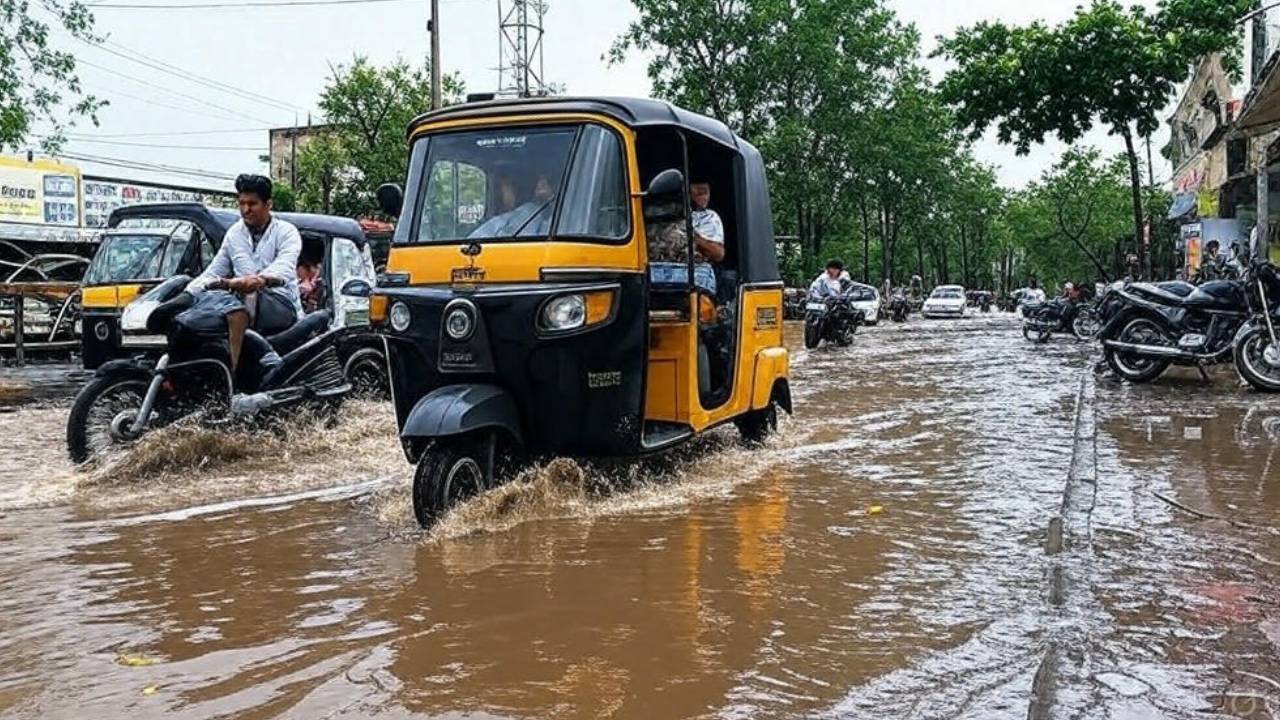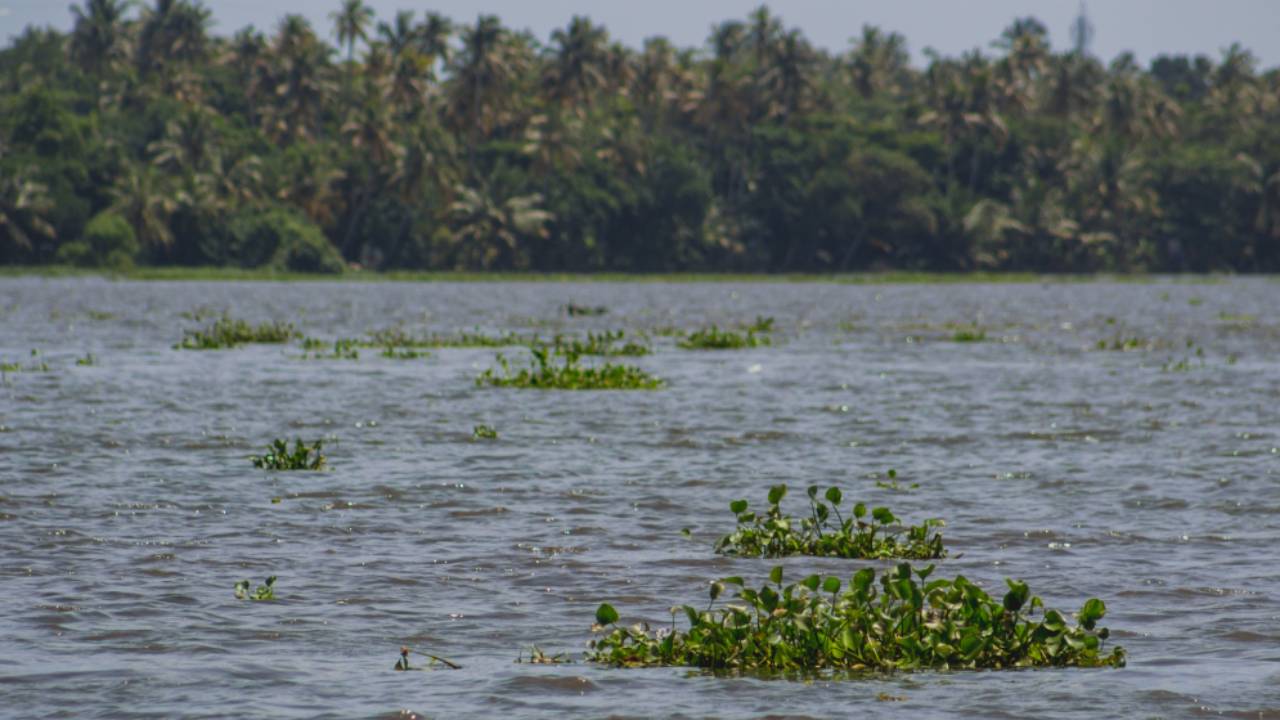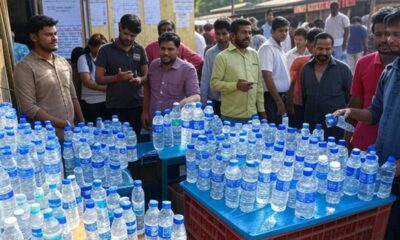Karnataka
Maoist Activity in Sullia, Karnataka: ANF Conducts Operations
Learn about the heightened Anti-Naxal Force (ANF) activity in Koojimalai forest following recent sightings of suspected Maoists.

In response to escalating concerns over suspected Naxalite activity, the Anti-Naxal Force (ANF) has intensified combing operations in the dense expanse of Koojimalai forest. Reports indicate a surge in sightings of individuals believed to be associated with Maoist groups, prompting ANF jawans to bolster their presence in the region.
On Thursday, yet another sighting of a suspected Naxalite was reported from a heavily wooded area within the forest. Eyewitness accounts from a worker in the rubber plantation suggest the presence of an unfamiliar woman in the vicinity, igniting efforts to locate her amidst the dense foliage.
The ANF has wasted no time in responding to these reports, deploying teams to conduct thorough searches across the Ainekidu and Koojimale estate areas. Sources within the ANF have hinted at the possibility of lingering Naxalite presence along the fringes of the Pushpagiri forest sanctuary, underscoring the importance of vigilance in this region.
Confirming the gravity of the situation, ANF sources have acknowledged receiving multiple complaints regarding the presence of unidentified individuals in the Sampaje-Koojimalai corridor. This surge in activity has prompted the ANF to fortify its operations, ensuring a proactive approach to combat any potential threats posed by Naxalite elements.
As the ANF remains steadfast in its mission to maintain peace and security in the region, residents of Koojimalai and surrounding areas can take solace in the concerted efforts being made to address the looming specter of Naxalism. With continued vigilance and collaboration between law enforcement agencies and local communities, the menace of Naxalite insurgency can be effectively curtailed, safeguarding the tranquility of this pristine forest enclave.
Karnataka
Hubli Tragic Incident : Migrant Worker Suspected in Child’s Murder Dies in Police Encounter
In a heartbreaking event that has shaken Hubballi, Karnataka, a five-year-old girl was allegedly kidnapped and killed, sparking outrage in the community. The suspect, a 35-year-old migrant worker from Patna, Bihar, was later killed in a police encounter on Sunday, April 13, 2025, according to authorities. The incident began when the young girl’s body was […]

The shocking incident in Hubli has intensified concerns over child safety and sparked widespread public outrage.
In a heartbreaking event that has shaken Hubli, Karnataka, a five-year-old girl was allegedly kidnapped and killed, sparking outrage in the community. The suspect, a 35-year-old migrant worker from Patna, Bihar, was later killed in a police encounter on Sunday, April 13, 2025, according to authorities.
The incident began when the young girl’s body was discovered in an abandoned shed, prompting a swift response from the Karnataka Police. Using CCTV footage, officers identified the suspect, Ritesh Kumar, who was accused of abducting and murdering the child. Authorities suspect the girl may have been sexually assaulted before her death, though they are awaiting postmortem results to confirm.
As the investigation unfolded, police tracked Kumar to an abandoned house near the Tarihal underpass. According to Hubli-Dharwad Police Commissioner N. Shashi Kumar, the suspect attempted to escape custody, attacking officers by throwing stones and damaging vehicles. In response, Sub-Inspector Annapurna fired warning shots before shooting Kumar in the leg and chest. He was rushed to Karnataka Medical College and Research Institute – Hubli but was declared dead on arrival.
The tragedy has left the victim’s family, originally from Koppal district, in deep grief. The girl’s mother works as a domestic helper and beauty parlor assistant, while her father is a painter. The community rallied outside Ashok Nagar police station, demanding justice and expressing frustration. Some locals called for harsh punishment, while others raised concerns about migrant workers, though the Police Commissioner urged against generalizations.
This devastating case has highlighted issues of child safety and crime in Karnataka, with authorities emphasizing their commitment to justice. The investigation continues as police await further reports to provide clarity on the circumstances of the girl’s death.
Bidar
Heavy Rain Hits Bidar: Thunderstorms Bring Relief and Disruption
On Thursday, April , 2025, Bidar city and several parts of the surrounding taluk experienced a refreshing yet powerful thunderstorm accompanied by heavy rain. According to a recent report by Prajavani, the downpour brought a much-needed break from the heat, cooling down the region and leaving residents with mixed feelings of relief and concern. The […]

On Thursday, April , 2025, Bidar city and several parts of the surrounding taluk experienced a refreshing yet powerful thunderstorm accompanied by heavy rain. According to a report, the downpour brought a much-needed break from the heat, cooling down the region and leaving residents with mixed feelings of relief and concern.
The rain, paired with rumbling thunder, swept across multiple areas, offering a soothing change in weather. While no injuries or fatalities were reported, the storm did leave its mark. In Chikli (J) village of Aurad taluk, fierce winds knocked down an electric pole, hinting at the intensity of the weather event. Thankfully, the damage was minimal, and life continued with little interruption.
For the people of Bidar, this sudden burst of rain was a welcome surprise after days of warm weather. The stormy skies not only lowered temperatures but also painted a dramatic picture across the region. As the clouds rolled in, they brought a sense of calm to some, while others kept an eye out for any potential disruptions.
This weather shift highlights how unpredictable nature can be, especially in early spring. For those in Bidar, it’s a reminder to enjoy the cool moments while staying prepared for whatever the skies might bring next. Keep checking back for more updates on how this rainy spell impacts the area!
Bidar
Janawada Lake Rejuvenation: A Lifeline for Bidar Fishermen and a Promising New Hotspot for Tourists
Imagine a once-dry lake in Karnataka’s Bidar city, now buzzing with life, supporting local fishermen, and pulling in visitors from nearby cities. That’s the story of Janawada Lake—a stunning transformation that’s breathing new energy into the community and turning heads as a must-visit picnic spot. Thanks to the Mission Amrit Sarovar program under the Mahatma […]

Imagine a once-dry lake in Karnataka’s Bidar city, now buzzing with life, supporting local fishermen, and pulling in visitors from nearby cities. That’s the story of Janawada Lake—a stunning transformation that’s breathing new energy into the community and turning heads as a must-visit picnic spot.
How Janawada Lake Rejuvenation Turned Into a Sustainable Source of Income for Local Fishermen
Thanks to the Mission Amrit Sarovar program under the Mahatma Gandhi National Rural Employment Guarantee Act (MGNREGA), this lake got a second chance. Back in 2022, the rejuvenation project kicked off, aiming to revive 91 lakes across Bidar district. Janawada was one of them, and boy, has it paid off! After two solid monsoon seasons, the lake is brimming again, proving that a little care can go a long way.
For the local fishing families, it’s been a game-changer. Two societies, made up of 65 hardworking members, are now thriving here, raising four popular fish species—goldfish, catla, mrigal, and rohu. In just two years, they’ve harvested around 10 quintals of fish, sending their catch to big markets like Bengaluru, Hyderabad, and Pune. It’s not just about the fish; it’s about steady income and hope for folks who’ve long depended on this land.
But it’s not all work and no play. Janawada Lake’s peaceful vibes and lush surroundings have caught the eye of tourists too. “It’s the natural beauty and easy access that make it a perfect getaway,” says Girish Badole, the Chief Executive Officer of Bidar Zilla Panchayat. Whether you’re from a neighboring village or just passing through, the lake’s charm is hard to resist.
Janamma, the Deputy Director of the Fisheries Department in Bidar, calls it an ambitious success. “We took on this project to bring ponds and lakes back to life, and Janawada is proof it’s working,” she says. The Sagar Society, which leases the lake for fish farming, has turned it into a sustainable hub—balancing livelihoods with nature.
So, next time you’re looking for a serene escape or a peek into a community reborn, Janawada Lake in Bidar might just be your spot. It’s more than a lake—it’s a story of revival, resilience, and a little slice of paradise in Karnataka.
-

 india2 years ago
india2 years ago“Major Crash of Sukhoi Su-30 and Mirage 2000 Fighter Jets in Madhya Pradesh”
-

 Sports2 years ago
Sports2 years agoWFI meetings on April 16, elections likely to be discussed
-

 india1 year ago
india1 year agoPM Modi Meets Deve Gowda for Seat Sharing Talks
-

 india1 year ago
india1 year agoBengaluru: False threat to bomb Raj Bhavan
-

 india2 years ago
india2 years ago“AIMIM to Contest 50 Seats in Upcoming Telangana Assembly Elections”
-

 Entertainment1 year ago
Entertainment1 year agoAnant Ambani: Controversy at the Ambani Pre-Wedding Bash
-

 Karnataka2 years ago
Karnataka2 years agoWomen have to show their Aadhaar to travel free on KSRTC bus
-

 Entertainment2 years ago
Entertainment2 years agoRajinikanth is Moideen Bhai in ‘Lal Salaam’










